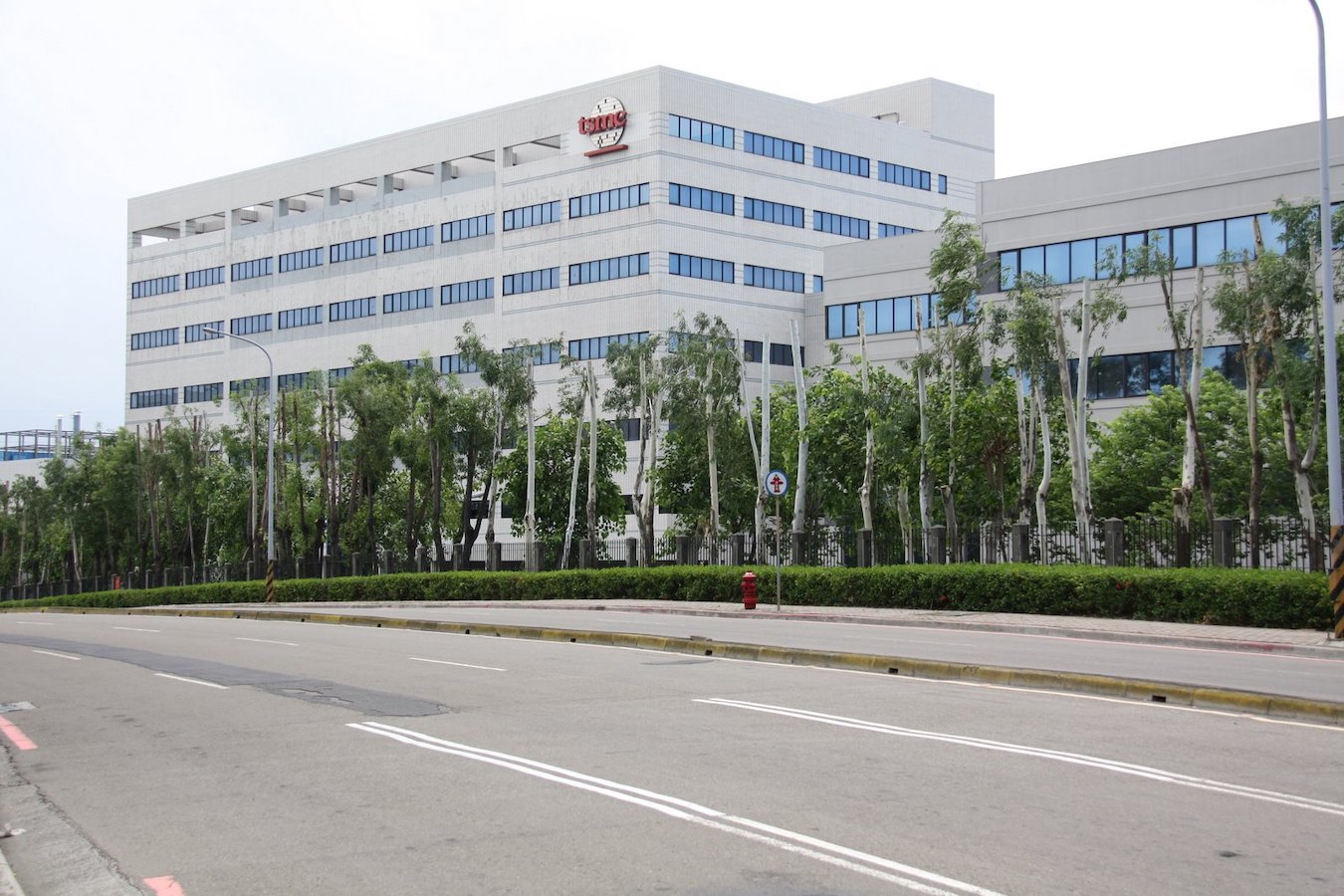by Jesse R.
語言:
English
Photo Credit: TrickHunter/WikiCommons/CC BY-SA 4.0
TAIWAN SEMICONDUCTOR MANUFACTURING COMPANY (TSMC) recently won a $6.6 billion grant from the US Department of Commerce to subsidize the construction of three semiconductor manufacturing fabrication plants in Phoenix, Arizona. The total package could come to $11.6 billion, inclusive of loans. This is the largest cash grant the US has awarded a foreign company and the largest single greenfield project by a foreign company in US history.
The funds will support the development of a third TSMC semiconductor fab in Arizona, which will join the other two currently in the pipeline. Altogether, this will bring TSMC’s total investment in construction of semiconductor producing capabilities in the US to over $65 billion.
TSMC’s first Arizona fab will produce 4nm FinFET process technologies. TSMC Arizona announced that the second fab (which has faced delays, pushing its launch date back to 2027 or 2028) will produce the world’s most advanced 2nm nanosheet process technology, in addition to previously announced plans to produce 3nm process technologies. TSMC Arizona’s third fab will produce 2nm or more advanced process technologies, depending on customer demand. TSMC Arizona expects to begin high-volume production in their first fab in the US by the first half of 2025.
 Photo credit: Briáxis F. Mendes (孟必思)/WikiCommons/CC BY-SA 4.0
Photo credit: Briáxis F. Mendes (孟必思)/WikiCommons/CC BY-SA 4.0
The plans to develop the high-end 2nm technologies in Arizona, which were not originally certain, were reportedly made over concerns that the older generation of technologies would eventually come to represent a lesser portion of their current sales as demand for AI capabilities (which run on 2nm chips) becomes more ubiquitous among its major customers, which include Apple, NVIDIA, and Intel, among others.
The grant announcement comes as a part of the Biden administration’s 2022 CHIPS Act, which allocated over $50 billion in government incentives to spur domestic US chip manufacture. The necessity of this from the US side is hard not to see, as Washington is keen on increasing the domestic manufacture of advanced semiconductor technology under the umbrella of national security. The US has been engaged in an AI arms race, particularly with China, to which it has curtailed the sale by US chipmakers of the graphic processing units (GPUs) on the highest end of the market – particularly NVIDIA H100 units, among the most advanced products before the recent announcement of the NVIDIA Blackwell B200 process, which contains over 200 billion transistors.
While there have been calls from some industry and governmental observers to slow the pace of AI development to address ethical and environmental concerns, it seems unlikely that either the US or China would be willing to take such a step out of fears that the other would quickly surpass it. Thus one must assume that large-scale investments into the manufacture of these technologies will continue unabated.
Indeed, worldwide spending on AI is set hit over $400 billion by 2027, 2.5x the estimated 2023 level, according to the International Data Corporation (IDC). Amid this, Taiwan’s profile has been dramatically raised by TSMC’s position as a linchpin of the semiconductor manufacturing supply chain needed to support the global AI ecosystem. This has been highlighted by the recent coverage of the 7.2-scale earthquake which struck eastern Taiwan, with several international news agencies framing the catastrophe in terms of how long TSMC had to suspend production at its foundries instead of the human toll it took on the areas worst affected.
Given the aggressive demand for its products, it is no surprise then that TSMC, a large multinational corporation beholden to its shareholders, would welcome large foreign government subsidies in an effort to enhance its bottom line and ensure at least some continuity of its operations in case of disruptions.
However, moving advanced semiconductor manufacture offshore, even partially, could have serious economic and security implications for Taiwan. While it is difficult to replicate what TSMC has become in regards to global advanced semiconductor manufacture, it is not impossible. Supply chains can be copied, as seen in the case of China’s BYD, which became the largest electric vehicle (EV) manufacturer in the world, surpassing Tesla years after Tesla CEO Elon Musk vigorously lobbied to change Chinese regulations in regards to the production of such vehicles, allowing him to build larger and more numerous factories in the country and providing China with the knowledge and workforce to foster its own domestic EV industry. While advanced semiconductor manufacture is among the most specialized industries in the world, there have been moves by non-Taiwanese actors to carve out their own share in the market – Samsung, which recently unveiled 2nm chip deals, has been another contender for the semiconductor manufacturing leadership, holding around 13% of the global market.
Of course, Taiwan will almost certainly not lose its dominance in the highly-differentiated advanced semiconductor manufacturing industry anytime soon. The country is forecasted to continue to produce around 60% of advanced semiconductors by 2027. However, this is down slightly from the estimated 68% it currently produces. Notably, this loss in share is not forecasted to come from China but from Taiwan’s nominal allies, including the United States (12% share to 17% share) and Japan (0% share to 4% share), where TSMC is also investing in two fabrication plants. Indeed, the Biden administration’s announcement of the TSMC grant came with the stated goal of the US producing 20% of the world’s leading-edge chips by 2030.
Additionally, while Taiwan certainly occupies the preeminent position in the manufacturing of the chips need to power AI infrastructure, its place higher up the technology stack has lagged behind other countries. Large tech providers such as Amazon, Microsoft, and Google have in recent years routinely announced increasingly large multi-billion dollar investments into the digital economies of Asian countries such as India, Malaysia, Japan, and Thailand. Regional technology companies including Alibaba, Baidu, NAVER, and Kakao have announced similar investment plans into the development of their own large-language models (LLMs) for their domestic markets.
Beyond investment by foreign capitalist entities, other regional governments have also taken aggressive action in promoting access to GPU infrastructure for local companies in an effort to boost their domestic economy and stay ahead of the technology curve. NHN Cloud has been backed by the Korean Ministry of Science and ICT and Gwangju Metropolitan City to establish a GPU hub in Buk District, Gwangju, and the Japanese government has subsidized the development of a $100 million supercomputer in Ishakari City, Hokkaido in partnership with Sakura Internet, with the express goal of providing AI capabilities to small and medium-sized Japanese enterprises.
However, Taiwan to-date has not received nearly the same amount of outlay into AI and cloud computing as neighboring countries. This could be partially due to the perception that economic conditions have led many Taiwanese enterprises to become much more cost-conscious than their Asian peers, preferring to stretch out operating expenses for as long as possible rather than invest heavily in the adoption of new technologies. The development of Taiwan’s own national LLM – Trustworthy AI Dialogue Engine (TAIDE) – has also been obstructed by limitation in funding and access to compute infrastructure.
But of course, not all of this can be attributed to domestic conditions in Taiwan, with Chinese pressure sometimes dissuading foreign tech companies from establishing a strong presence in Taiwan. A similar such phenomenon can be seen in Hong Kong, where geopolitical tensions between the US and China caused Meta and Google to scrap plans for a six-fiber pair cable system – Pacific Light Cable Network (PLCN) – carrying Internet traffic between Los Angeles and Hong Kong over security concerns. Indeed, part of the Google-owned portion of the cable system was meant to land in Taiwan.
Tensions between the US and China can also be seen at the heart of American policy towards TSMC. In fact, it was somewhat notoriously suggested in a US Army War College report by Jared M. McKinney and Peter Harris in 2021 that the US and Taiwan might work together to threaten to destroy TSMC domestic factories in case of a Chinese invasion. The notion (which was also picked up up by members of the US House Select Committee on the Chinese Communist Party) meant to invoke a “broken-nest” theory of national defense, in which China would theoretically be less likely to pursue military action against Taiwan if they knew this would result in the destruction of TSMC’s manufacturing capabilities. However, this was criticized and later somewhat walked back somewhat by former US national security officials, with Taiwanese Defense Minister Chiu Kuo-cheng clarifying in 2023 that such action would not be tolerated.
 Photo credit: Arusanov/Public Domain
Photo credit: Arusanov/Public Domain
The US military launching operations against a Taiwanese target, even to keep it from being commandeered by Chinese forces, is fraught with ethical and legal complications and could be considered an act of aggression against Taiwan itself. Indeed, it is questionable whether the specter of the destruction of TSMC would seriously dissuade Chinese invasion in any case, as motivations behind the Chinese conquest of Taiwan are simultaneously political and nationalistic, not purely economic, in nature.
All of this begs the question whether, in the realpolitik calculation of international affairs, Taiwan loses some strategic importance in the eyes of its allies without an intact TSMC that occupies a unique place in the advanced semiconductor supply chain, irreplaceable by any other entity in any other country. It is no surprise then that TSMC has played such a large part in the discussion of the defense of Taiwan, as the Taiwanese government is almost assuredly aware that keeping the foundries out of Chinese hands is a primary motivation for its defense by friendly countries. Thus, holding as much a share of global advanced semiconductor manufacture on its shores has long been seen as a way to entice it allies to keep defense of Taiwan’s sovereignty high on their list of priorities.
The United States, in particular, has been seen as a notoriously unreliable partner in recent years, with backlog of military equipment sales to Taiwan standing at over $19 billion as of early 2024. Current presumed Republican presidential candidate Donald Trump has openly signaled his intent to pursue a more isolationist foreign policy in the event of a second term. Notably, Trump is not alone in his thinking. Vivek Ramaswamy, sometimes cast as a contender for the MAGA-aligned Republican base in a post-Trump GOP, expressed during the 2023 Republican presidential primary cycle his skepticism that the US even needed to fulfill obligations of any kind to US allies such as Ukraine or Taiwan. Indeed, he predicated any defense of Taiwan under a potential Ramaswamy administration on the condition that US domestic semiconductor industry had not yet reached maturity. In the case that advanced semiconductor manufacture begins to come to American shores in larger volume, the possibility that this becomes a more mainstream position among US politicians of either major party becomes frighteningly more realistic.
It is hard to consign responsibility for this shift in political and economic calculus to any one actor, as it seems almost inevitable that the advanced semiconductor manufacturing industry would eventually diversify away from any single bottleneck, given the criticality of this technology to perceived national security. In light of this, one must wonder if the Taiwanese government is well-equipped with contingency plans for a possible future in which TSMC is no longer as stable a pillar in its national defense strategy, or if overreliance on the current necessity of its role in the global semiconductor supply chain will represent a long term strategic threat.

